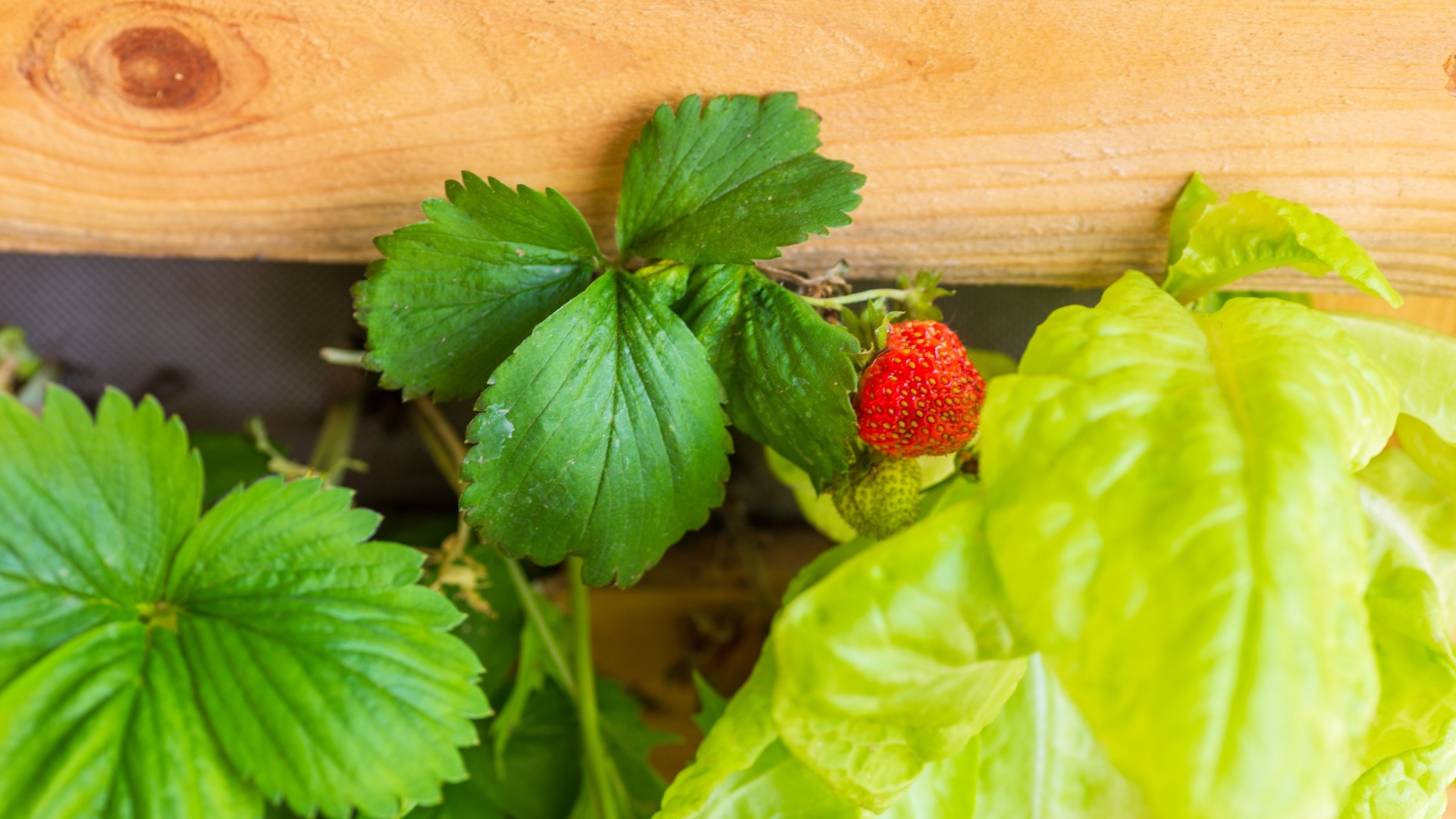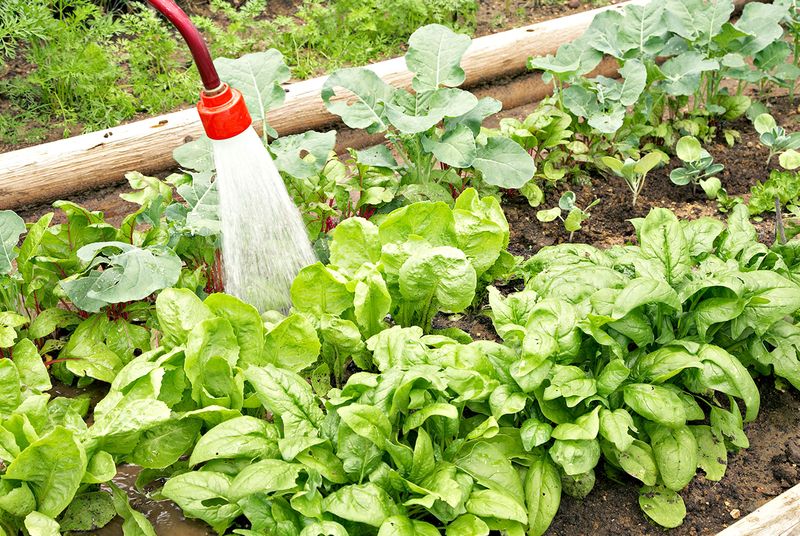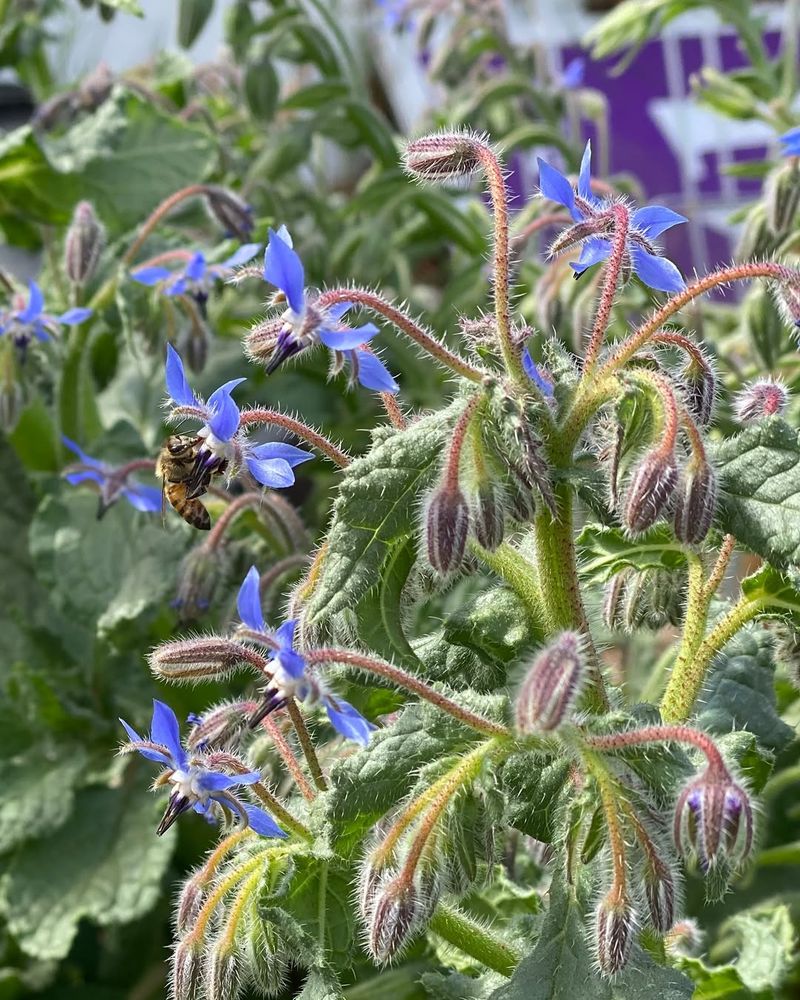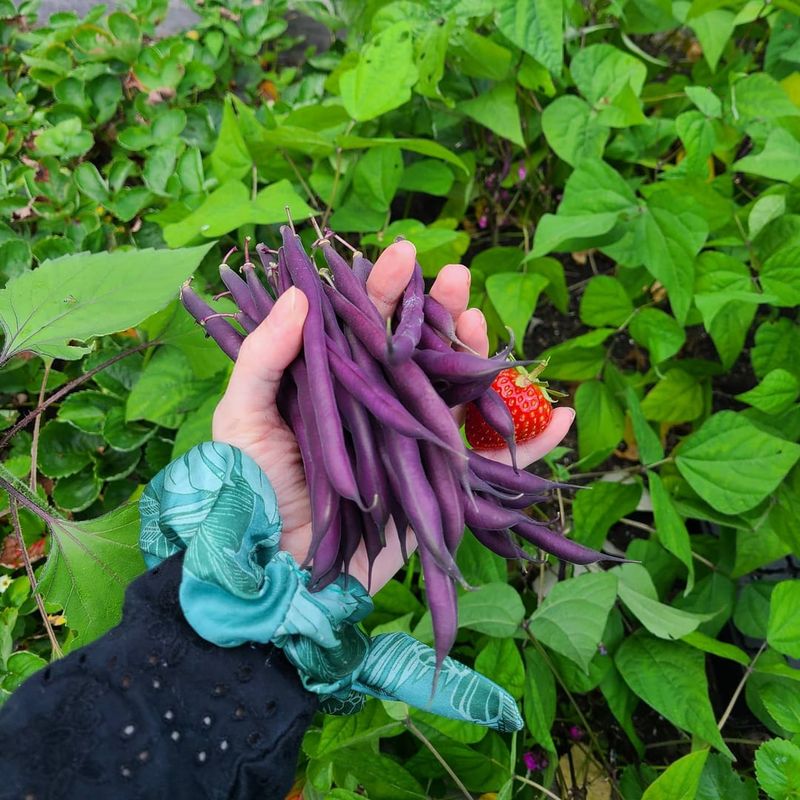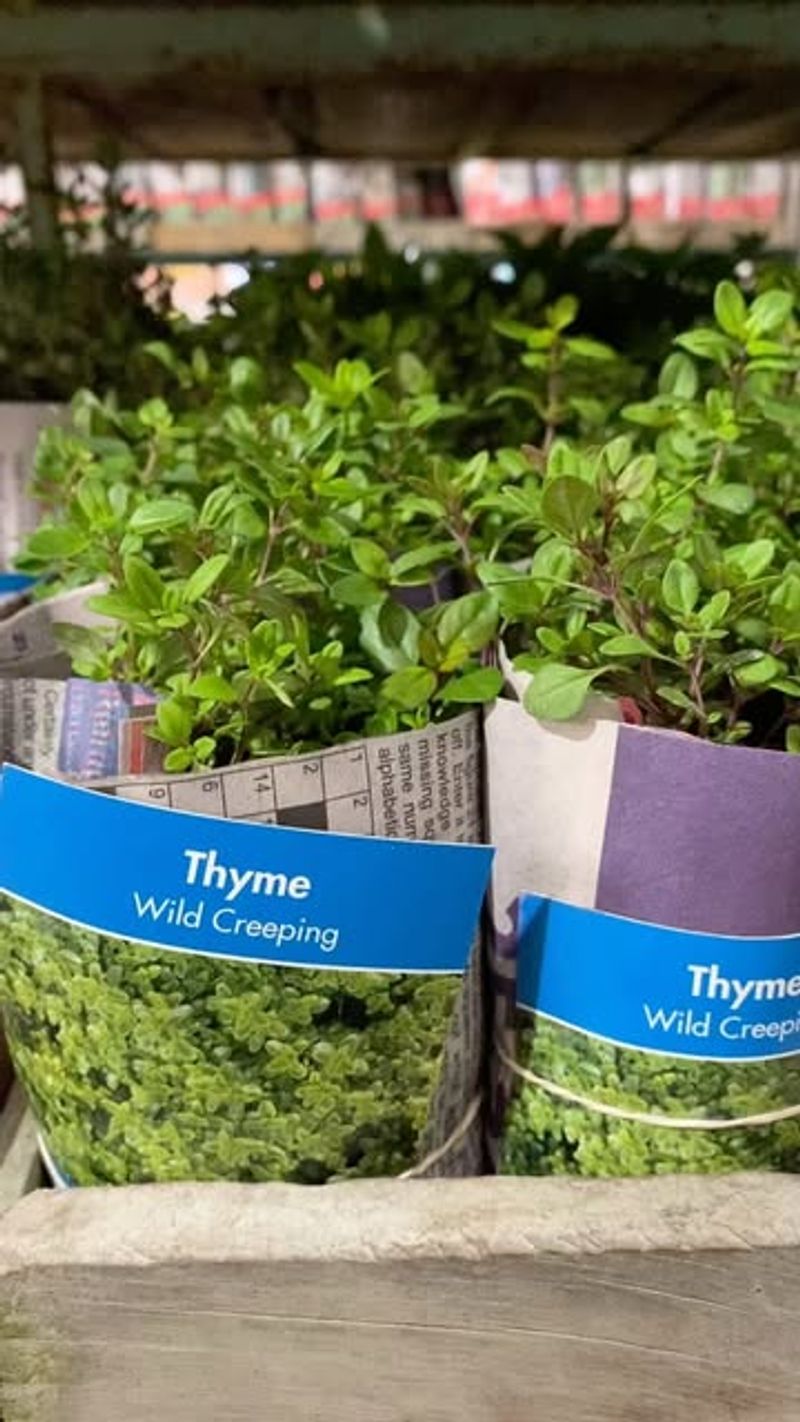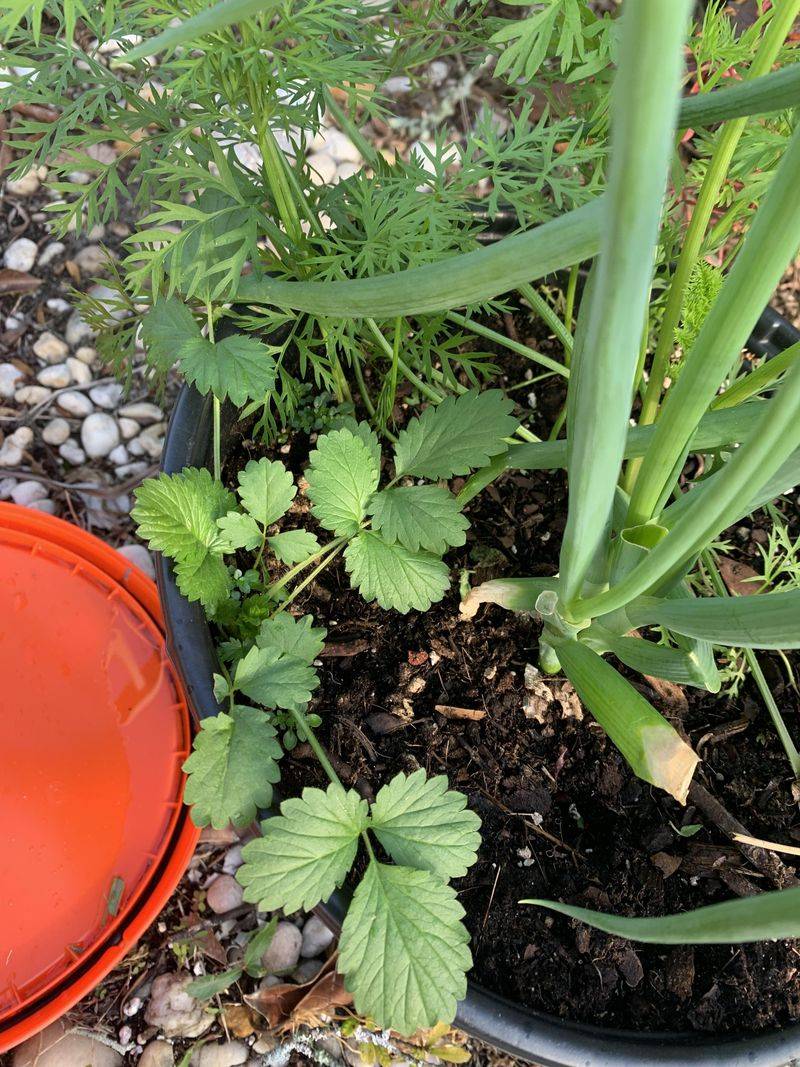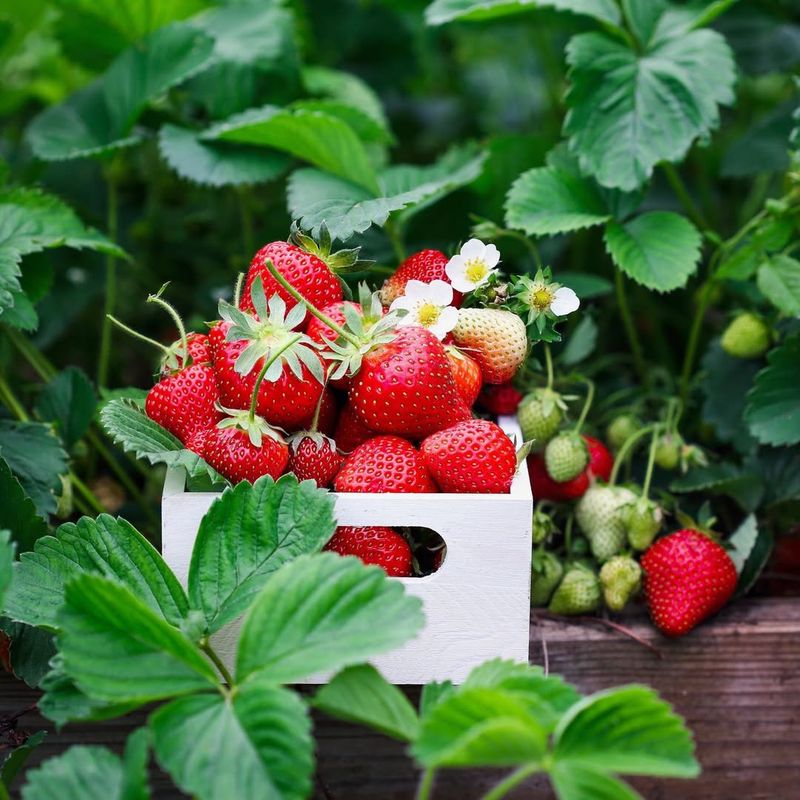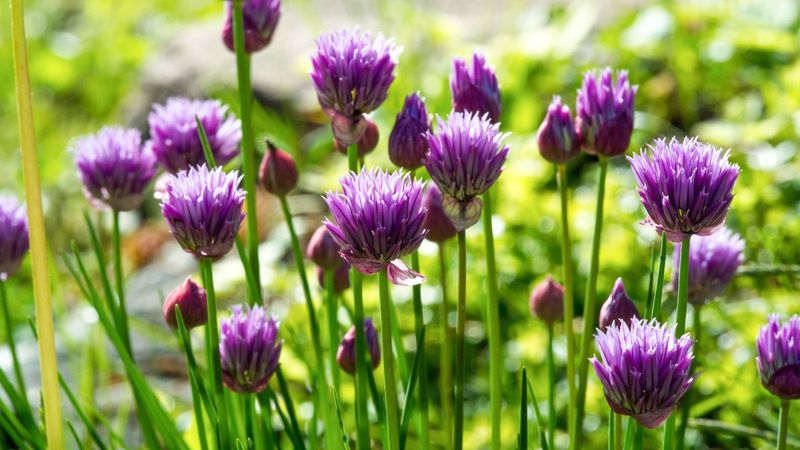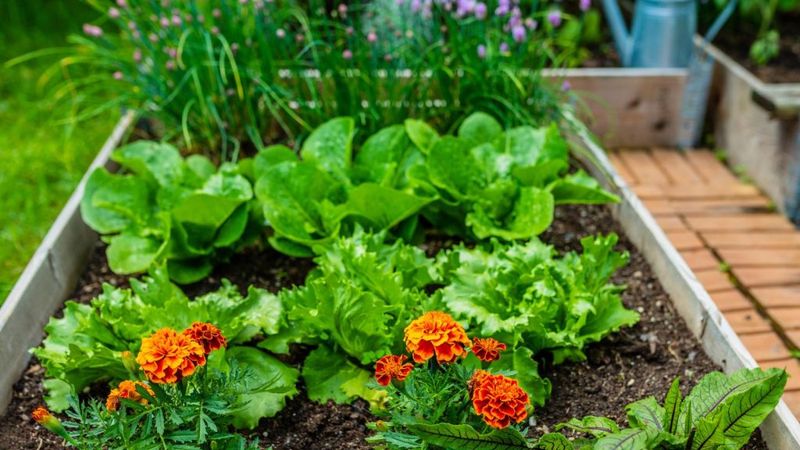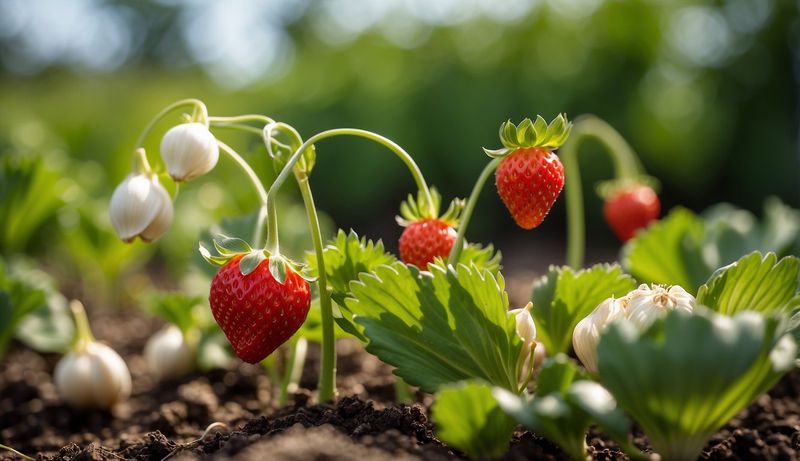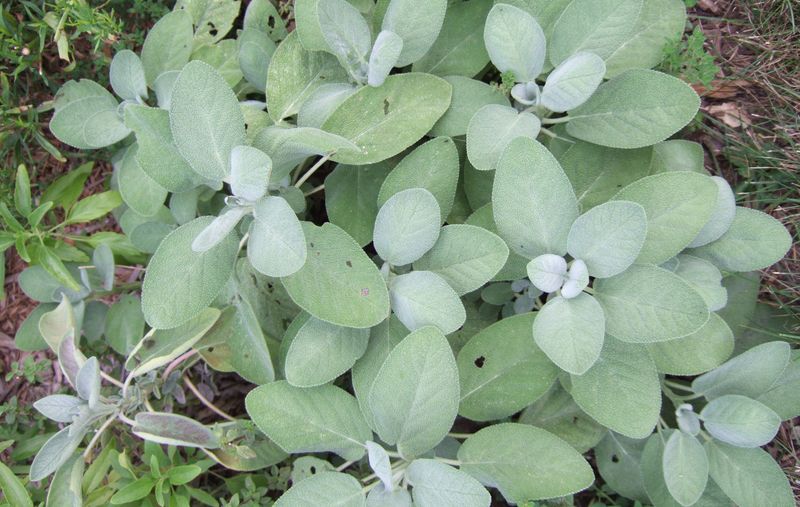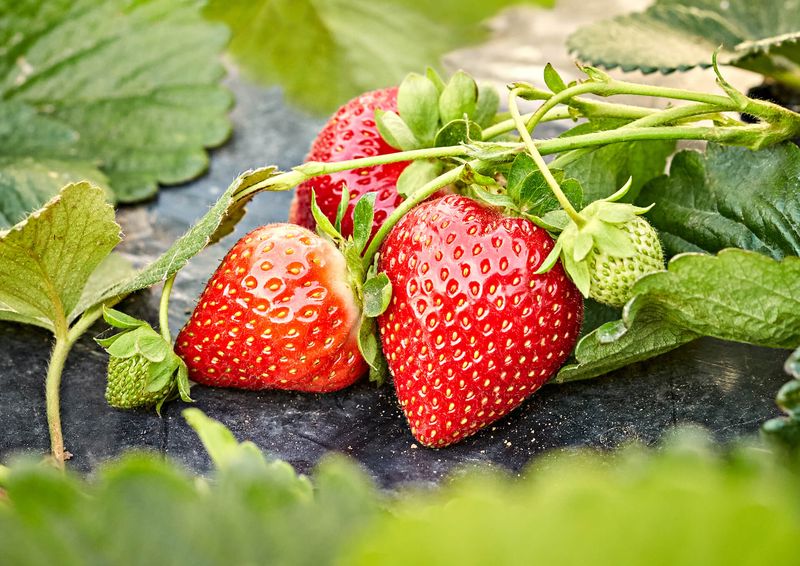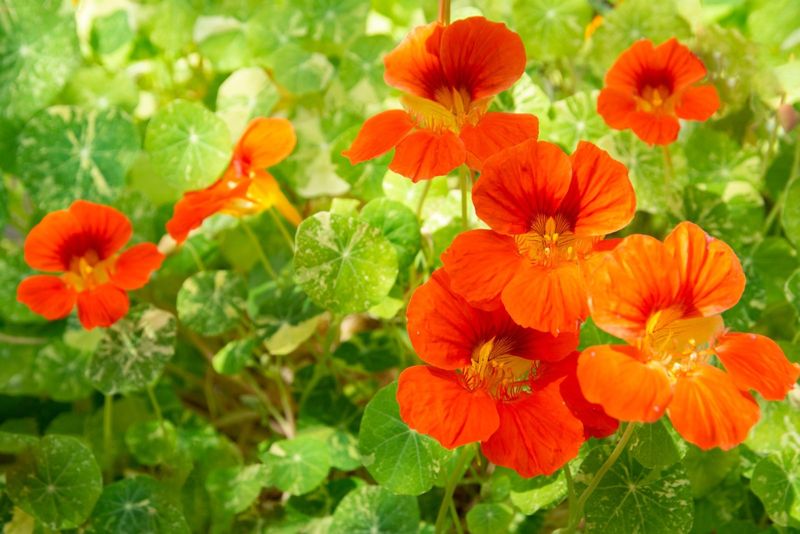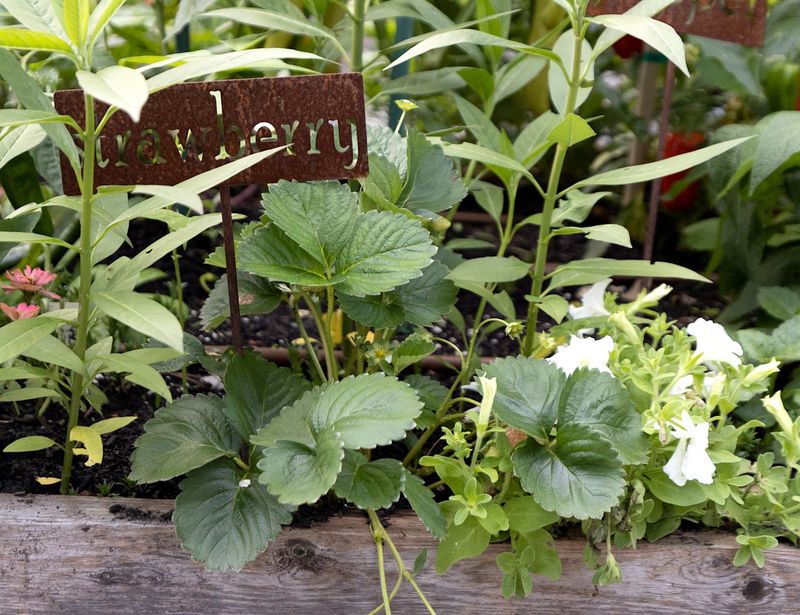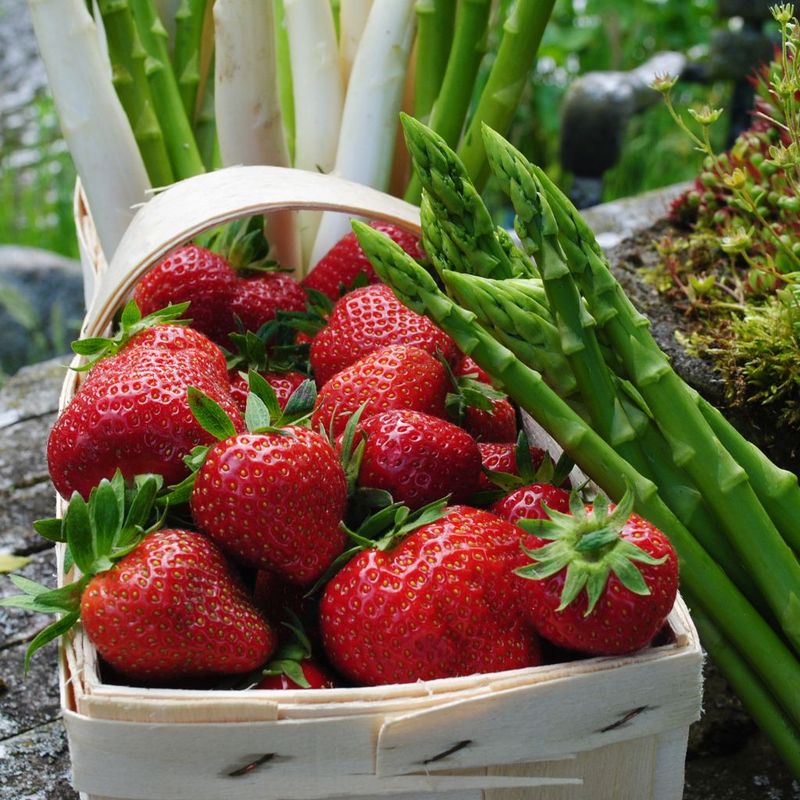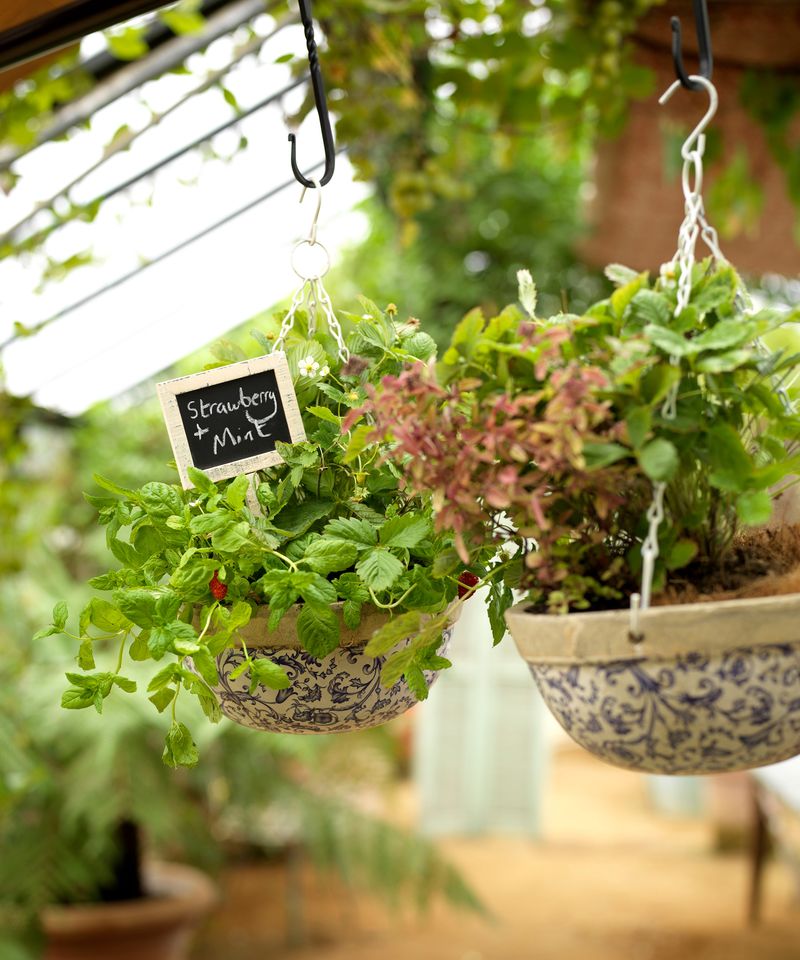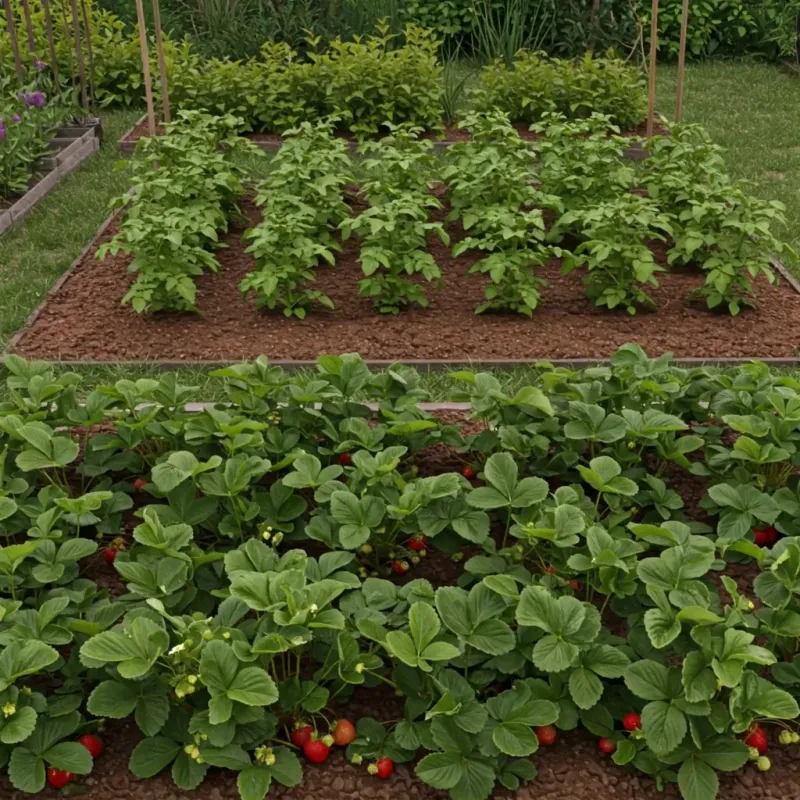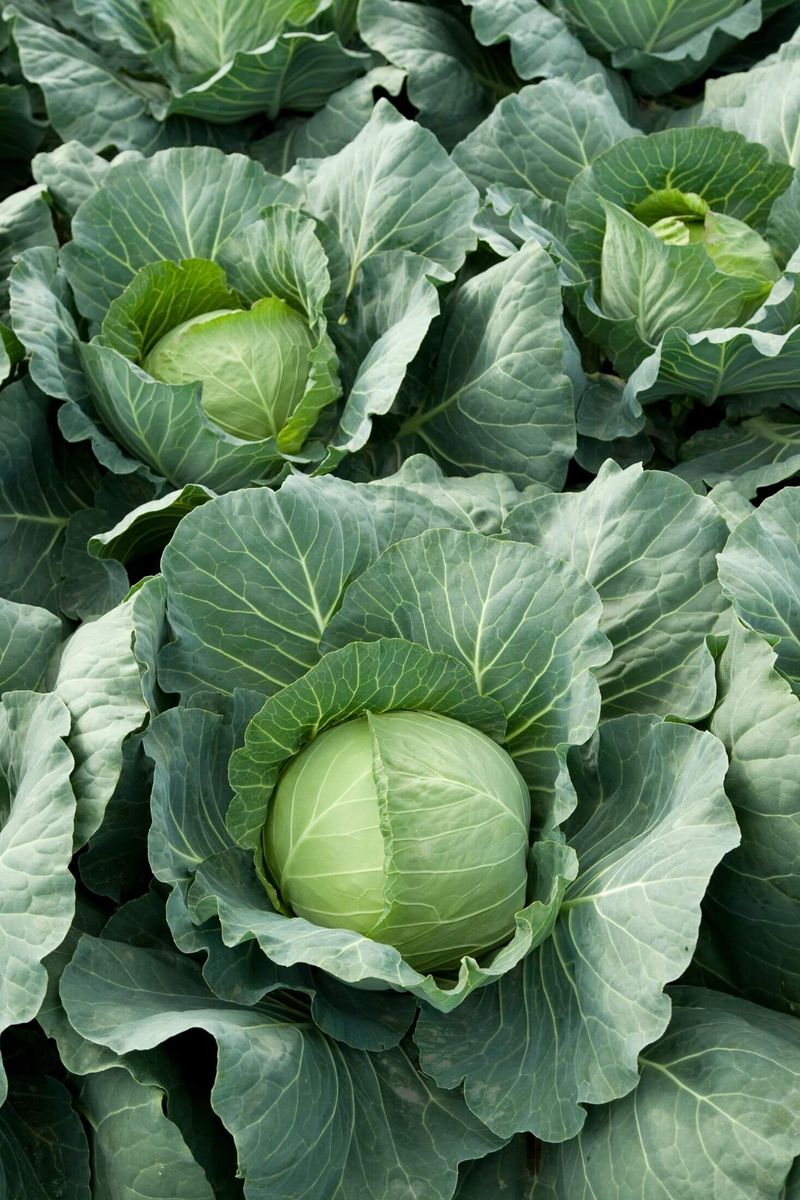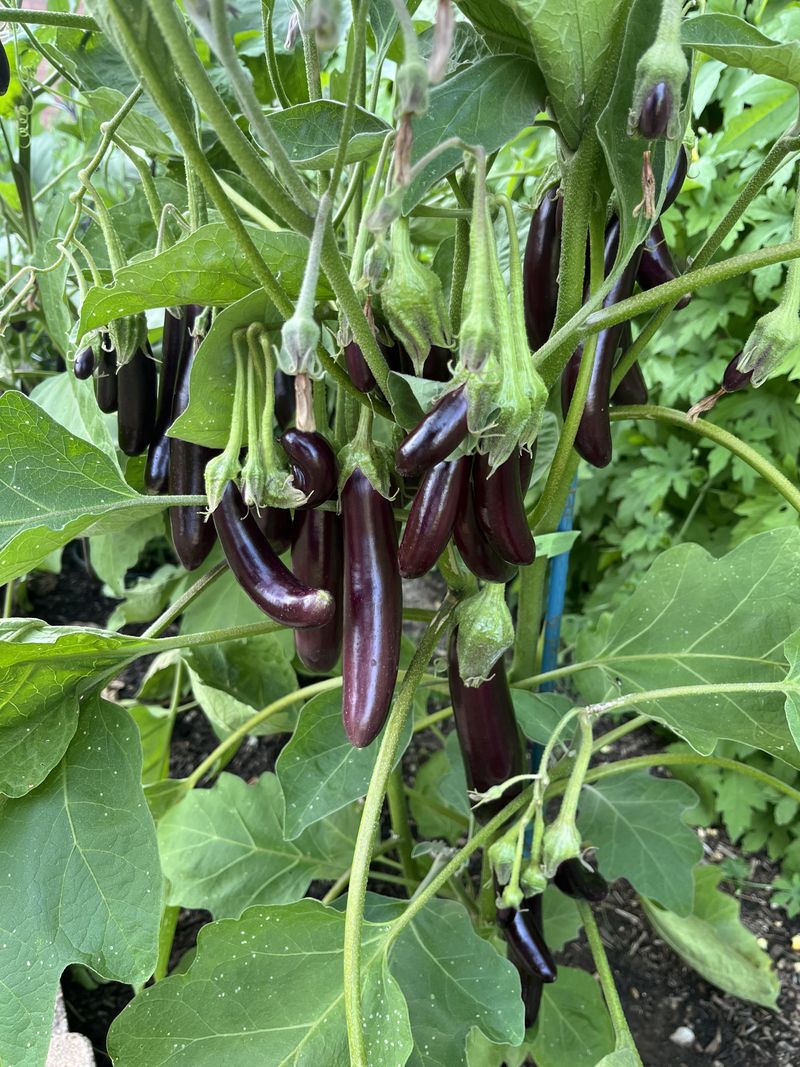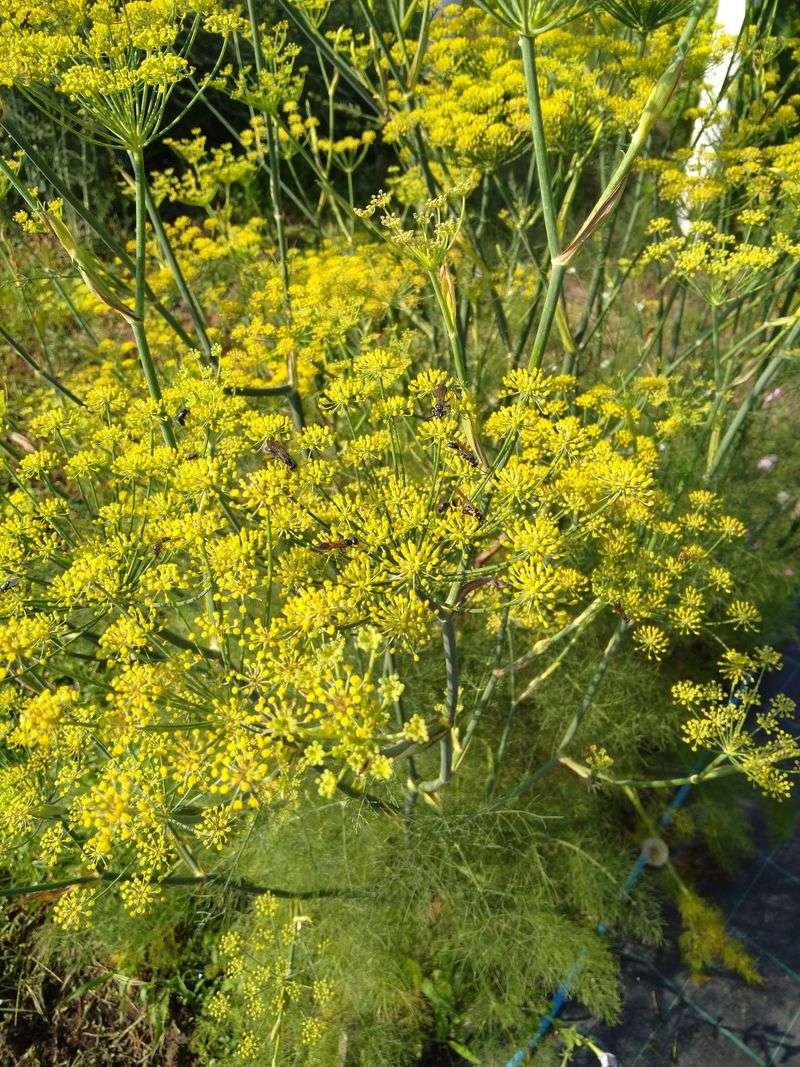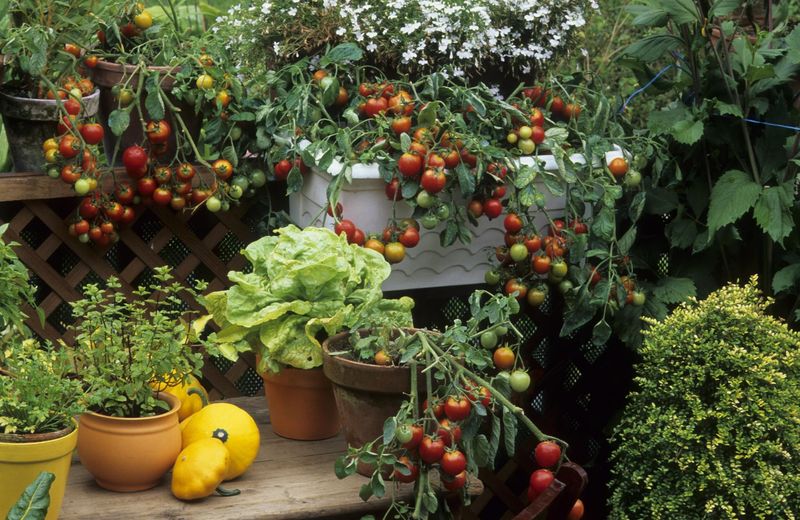Strawberries aren’t just sweet—they’re surprisingly social in the garden. Pair them with the right vegetables and herbs, and you’ll boost flavor, deter pests, and get better harvests all around. But choose poorly, and you could end up with stunted growth or disease.
These 15 companion plants are strawberry-approved—and 5 are definite no-gos.
1. Spinach: The Perfect Strawberry Neighbor
Spinach creates a living mulch beneath strawberry plants, keeping the soil cool and moist during hot summer days. The shallow roots of spinach don’t compete with strawberries for nutrients.
As a bonus, harvesting spinach early in the season makes room just as strawberry plants begin to spread. Many gardeners notice their strawberries taste sweeter when grown alongside spinach patches.
2. Borage: The Blue-Flowered Ally
Borage might look unassuming with its fuzzy leaves, but this herb works magic for strawberry patches. Its bright blue flowers attract pollinators that help strawberry blossoms develop into juicy fruits.
Garden experts have long noticed that strawberries grown near borage develop a more intense flavor. The herb also naturally repels tomato hornworms and cabbage worms that might otherwise damage nearby plants.
3. Bush Beans: Nitrogen-Fixing Friends
Bush beans perform a valuable service for neighboring strawberry plants by fixing nitrogen in the soil. Their root systems host special bacteria that capture nitrogen from the air and convert it into a form plants can use.
The bushy growth habit of these beans also provides light shade during the hottest part of summer. Many gardeners plant bush beans on the south or west side of strawberry patches to create afternoon shade without blocking morning sun.
4. Thyme: Aromatic Pest Deterrent
Thyme creates a fragrant carpet that confuses pests looking to munch on your strawberries. The strong aroma masks the sweet scent that normally attracts problematic insects to strawberry patches.
Low-growing thyme varieties work especially well, forming a living mulch that suppresses weeds. As an added benefit, the essential oils in thyme have natural fungicidal properties that help prevent rot and mildew issues that commonly affect strawberry plants.
5. Onions: Underground Guardians
Onions emit compounds through their roots that deter many soil-dwelling pests that would otherwise damage strawberry plants. Their strong scent also confuses flying insects searching for strawberry patches to lay eggs.
Green onions work particularly well since they don’t require much space and can be tucked between strawberry plants. The vertical growth habit of onions means they don’t compete for ground space with spreading strawberry runners.
6. Lettuce: Quick-Growing Space Maximizer
Lettuce makes excellent use of the spaces between young strawberry plants before they spread. Since lettuce matures quickly, you’ll harvest it long before your strawberry plants need the extra room to send out runners.
The broad leaves of lettuce varieties like butterhead provide natural shade for strawberry roots. Many gardeners find that interplanting lettuce helps keep strawberry plants producing longer into the summer by keeping the soil cooler and more moist.
7. Chives: Flowering Pest Repellents
Chives bring multiple benefits to strawberry patches with their slender, upright growth. Their purple pom-pom flowers attract beneficial insects while their pungent scent repels aphids and other pests that commonly attack strawberries.
The sulfur compounds in chives also help prevent scab and other fungal diseases. Many experienced gardeners plant chives at the corners of strawberry beds to create a protective boundary that deters both insects and larger pests like rabbits.
8. Marigolds: Colorful Soil Protectors
Marigolds release compounds from their roots that kill harmful nematodes in the soil. These microscopic worms can seriously damage strawberry roots, but they can’t tolerate the natural chemicals marigolds produce.
The bright orange and yellow blooms also attract beneficial insects that prey on strawberry pests. French marigold varieties work particularly well as companions since they stay compact and don’t overshadow the strawberry plants while providing their protective benefits.
9. Garlic: The Fungal Fighter
Garlic contains natural antifungal compounds that help protect strawberries from common diseases like gray mold and powdery mildew. The strong scent also masks the sweet smell of strawberries, confusing many pest insects.
Fall-planted garlic works especially well with June-bearing strawberries. By the time strawberries begin producing fruit in late spring, the garlic is nearly ready to harvest, creating a perfect timing partnership in the garden bed.
10. Sage: Aromatic Insect Repellent
Sage’s strong aroma naturally repels many strawberry pests, particularly those pesky strawberry weevils that can decimate a crop. The silvery-green leaves create a beautiful contrast against the bright green of strawberry plants.
As an added benefit, sage flowers attract many beneficial pollinators. Garden sage doesn’t spread aggressively, making it a well-behaved neighbor that won’t compete with your strawberry plants for space in the garden bed.
11. Caraway: The Root Separator
Caraway develops long taproots that break up compacted soil beneath strawberry patches. This improved soil structure helps strawberry roots spread more easily and access nutrients deeper in the soil profile.
The delicate white flowers of caraway attract tiny parasitic wasps that control caterpillars and other pests. Many European gardeners have traditionally planted caraway near strawberries, believing it improves the flavor of the berries through beneficial interactions in the soil.
12. Nasturtiums: Sacrificial Decoys
Nasturtiums act as trap crops that lure aphids away from your precious strawberries. These bright flowers are absolute magnets for aphids, keeping the pests occupied and away from your berry plants.
The sprawling growth habit of nasturtiums also helps shade the soil and conserve moisture. Their edible flowers and leaves add a peppery zip to salads, making them multi-purpose companions that earn their keep in the strawberry patch.
13. Cilantro: The Early Season Helper
Cilantro bolts and completes its lifecycle just as strawberries begin producing heavily, making it a perfect early-season companion. While actively growing, cilantro’s strong scent masks the strawberry aroma that attracts certain pests.
The tiny white flowers that appear when cilantro bolts attract beneficial insects like hoverflies and lacewings. These garden allies help control aphids and other soft-bodied pests that might otherwise damage your strawberry harvest.
14. Asparagus: Long-Term Garden Partners
Asparagus and strawberries form a long-lasting partnership in perennial garden beds. The deep roots of asparagus don’t compete with the shallow root systems of strawberries, allowing them to share space harmoniously.
The fern-like foliage of mature asparagus provides dappled shade for strawberries during summer heat. Many gardeners plant strawberries along the edges of asparagus beds, using the available space efficiently while keeping both crops happy for years.
15. Mint: The Contained Companion
Mint deters many strawberry pests with its strong aroma, particularly ants that farm aphids. The key to success is keeping mint contained in pots sunken into the ground near strawberry plants to prevent it from taking over.
The cooling effect of mint planted nearby seems to help strawberries during hot weather. Some gardeners make a mint tea spray to apply to strawberry plants as a natural fungicide and insect repellent during humid periods.
16. Potatoes: Underground Competitors
Potatoes and strawberries make poor garden companions despite both being popular backyard crops. They compete for the same nutrients and moisture in the soil, often leaving strawberry plants stunted and less productive.
Both crops are also susceptible to similar fungal diseases like verticillium wilt. Once this soil-borne pathogen infects your garden, it can persist for years, making it important to keep potatoes well away from your strawberry patch.
17. Cabbage Family: Shared Disease Concerns
Cabbage, broccoli, cauliflower and other brassicas should be kept away from strawberries in the garden. These vegetables attract many of the same pests that trouble strawberries, creating a concentration of problems when planted together.
They also compete heavily for nutrients, especially calcium. The cabbage family’s heavy feeding habits can leave strawberry plants struggling to get enough nutrition, resulting in smaller berries and reduced yields.
18. Eggplant: The Disease Spreader
Eggplant shares too many disease vulnerabilities with strawberries to make a good neighbor. Both plants are susceptible to early blight and verticillium wilt, creating a situation where diseases can easily spread between them.
The feeding habits of eggplant also create competition problems. Eggplants are heavy feeders that can deplete soil nutrients needed by strawberries. For best results, keep these two crops in separate areas of your garden with plenty of distance between them.
19. Fennel: The Antisocial Herb
Fennel secretes compounds from its roots that inhibit the growth of many plants, including strawberries. This botanical behavior, called allelopathy, can significantly reduce strawberry yields and even kill young plants.
The tall growth habit of fennel also casts too much shade on sun-loving strawberries. Most experienced gardeners recommend giving fennel its own dedicated space far from strawberries and other vegetables to prevent these negative interactions.
20. Tomatoes: Fungal Disease Risks
Tomatoes and strawberries both fall victim to many of the same fungal diseases, creating a high-risk partnership. Verticillium wilt can easily spread between these plants when they share garden space.
The sprawling growth habit of tomato plants also creates too much shade for sun-loving strawberries. For healthier plants and better harvests, keep tomatoes and strawberries in separate areas of your garden with good air circulation around both crops.

